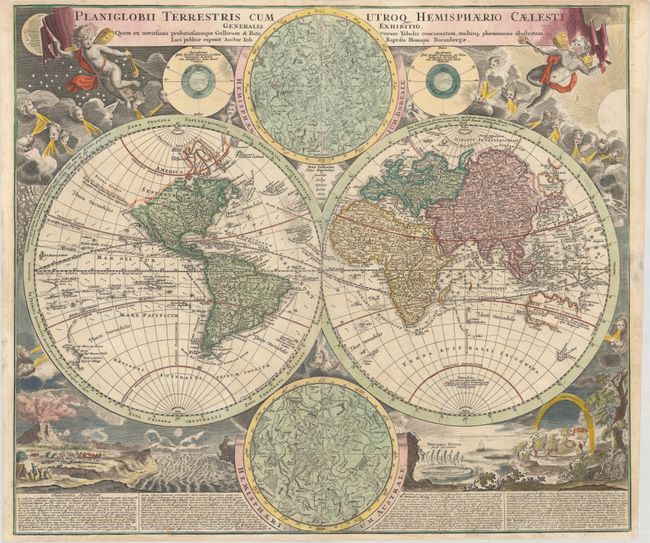Subject: World
Period: 1716 (published)
Publication:
Color: Hand Color
Size:
22.4 x 19.1 inches
56.9 x 48.5 cm
This is one of the most decorative eighteenth century world maps. The two hemispheres are surrounded by vivid engravings of natural phenomena such as waterspouts, a rainbow, earthquakes, and a volcano. Wind heads occupy the starry heavens, and two putti hold the title banner aloft. The map itself shows a typical geographical view of the period. California is shown as an island with an indistinct Fretum Anian and Terra Esonis above it. There is a River of the West emptying into a small sea just northeast of California. The partial coastlines of Australia, New Zealand, and New Guinea are noted. Australia is shown to be separate from New Guinea, Carpentaria, and Diemens Land. Nova Britannia is shown as a separate island off the coast of New Guinea with the notation that it was discovered by Dampier in 1700. Several explorer's tracks are traced, including Magellan, Dampier, Tasman, Gaetani and Charmont. Nestled between the hemispheres are two detailed celestial maps. Text panels at bottom describe the natural phenomena. Homann borrowed both the cartography and depictions of natural phenomenon from Zurner's similar map circa 1700.
References:
Condition: B
Contemporary color in the map with later color in the surrounding decorative elements on paper with a small coat of arms watermark. There are professional repairs to a a tear at bottom that extends into the Antarctic region in the eastern hemisphere, a small hole in the upper celestial sphere, and a 1/2" hole in the North Pacific, with a small amount of the image skillfully replaced in facsimile.


